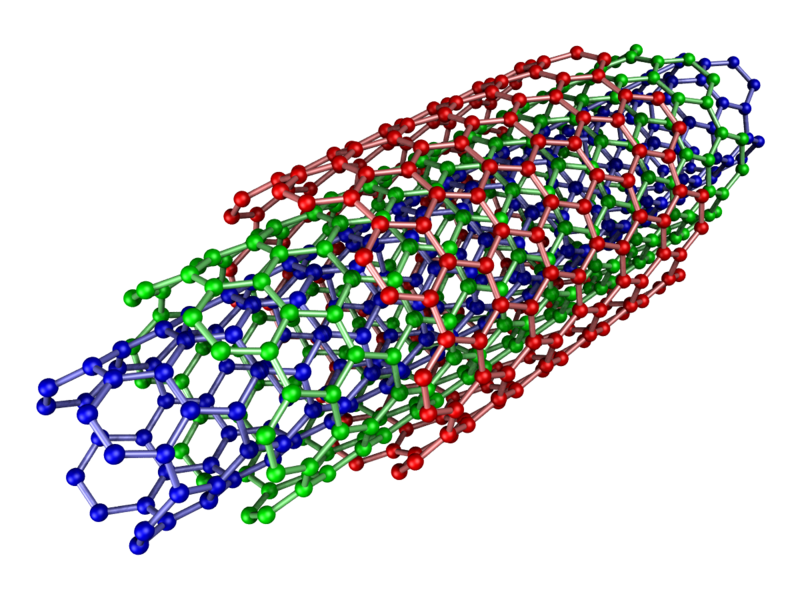RAMAN resonance spectrum (RAMAN) in a multilayer nanotube CNTs
Researcher and author: Dr. ( Afshin Rashid)
Note: The RAMAN resonance spectrum (RAMAN) in a single nanotube makes it possible to estimate the electronic structure and phonon structure of multilayer CNTs more accurately. Each carbon nanotube has a special electronic structure and as a result will have its own density levels . So the details of Raman resonance (RAMAN) are excellent for determining their structure .
The use of RAMAN resonance method (RAMAN) to measure the frequency of nanotubes in a sample is very common. In this technique, when the laser energy is equal to or close to the allowable optical electron transfer energy of the sample, we will increase the intensity, which is highly dependent on the nanoelectric structure of the sample. Therefore, RAMAN resonance is excellent for determining their structure . Nanotubes with a diameter of 0.75 nm <dt <2 / 4nm SWNTs (of the type SWCNTs) , the RBM Raman spectra between them being apparently (100cm-1 <WRBM <300cm) equivalent to symmetric displacement within the phase of atoms SWCNT carbon is in the radial direction. band G corresponds to the movement of neighboring atoms in the opposite direction along the surface of the tube in graphite It is two-dimensional, characterized by a multi- branched peak around (1-1600cm-1500). Peak to Peak Multishot RBM and G band in SP2 can not be seen. Usually no carbon compounds are SP2. A peak of compounds containing single carbon (band G) in the Lorentzian form is observed around (1-1582 cm) of their Raman spectrum. band D in the Raman spectrum only exists for SP2 atoms in the presence of (hetero) atoms, empty carbon spaces, or any lattice defects.
 Semiconductor nanotubes can be turned on / off in coordination with a voltage regulator. For the differentiation of metal and semiconductor SWCNTs are presented using diagrams VI. The researchers hypothesized that SWCNTs are semiconductors; They have an on / off ratio of 10 or more and have an off current of (9A-10) or less, which is in contrast to the characteristics of metal SWCNTs. In addition, for enriched samples, four-point measurements are made on thin films such as paper bucky to qualitatively measure the frequency of metal and semiconductor types in the sample. Of course, many other factors such as sample purity and layer thickness uniformity can cause layer resistance Thin to affect. These factors must be considered before making a final decision.
Semiconductor nanotubes can be turned on / off in coordination with a voltage regulator. For the differentiation of metal and semiconductor SWCNTs are presented using diagrams VI. The researchers hypothesized that SWCNTs are semiconductors; They have an on / off ratio of 10 or more and have an off current of (9A-10) or less, which is in contrast to the characteristics of metal SWCNTs. In addition, for enriched samples, four-point measurements are made on thin films such as paper bucky to qualitatively measure the frequency of metal and semiconductor types in the sample. Of course, many other factors such as sample purity and layer thickness uniformity can cause layer resistance Thin to affect. These factors must be considered before making a final decision.
Conclusion :
The Raman resonance spectrum (RAMAN) in a single nanotube makes it possible to estimate the electronic structure and phonon structure of multilayer CNTs more accurately. Each carbon nanotube has a special electronic structure and as a result will have its own density levels . So the details of Raman resonance (RAMAN) are excellent for determining their structure .
PhD in Nano-Microelectronics



